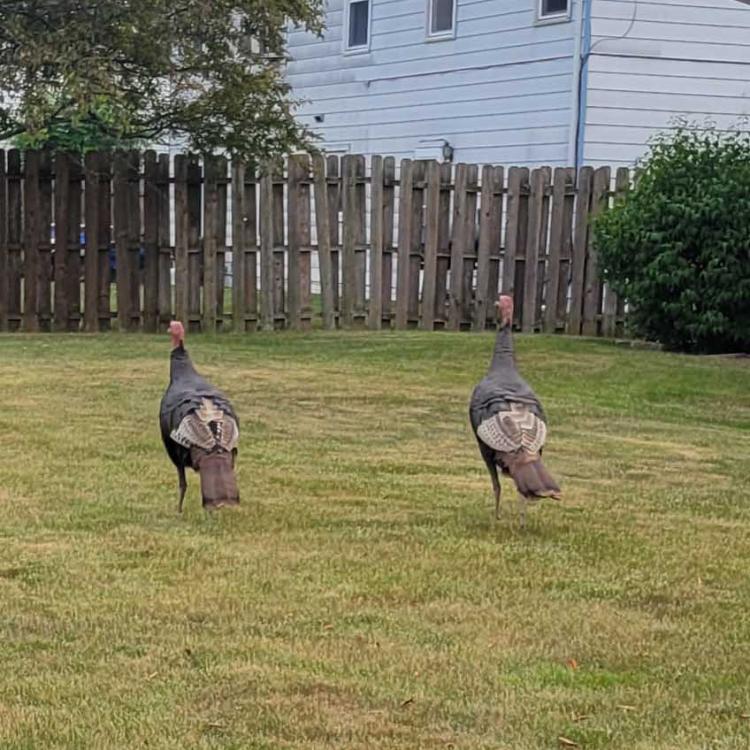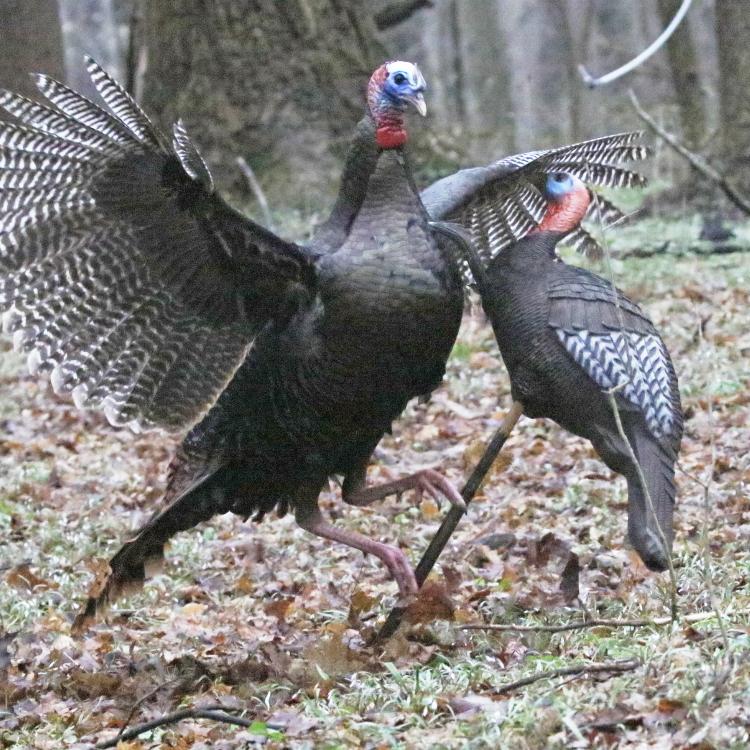Brenda Stocker shared this photo of two wild turkeys in her neighborhood in Lima.
Mike Fry
Q. Hi, Chip: I just finished reading your article in the November 2023 issue of Ohio Cooperative Living magazine titled “Where Have All the Wild Turkeys Gone?” The story was direct and to the point. I have seen some of the same low turkey numbers in my area, but I have also had two pretty good spring hatches the past two years. I definitely agree that high raccoon populations are bad news for wild turkeys. I have really been working to reduce the number of raccoons on my property, and I firmly believe it is helping. Always love your articles, very interesting and enjoyable!
A. Mike: Glad to hear that wild turkeys in your area may be starting a comeback; we’ll see, fingers crossed.
Theresa Perry
Q. What sorts of trees would be helpful to support wild turkeys? I have about 25 acres of woodlands next to an organic pasture, and would be happy to plant the appropriate trees or bushes.
A. Hi, Theresa: Thanks for your willingness to help wild turkeys. The birds need three things to survive: large trees for roosting, food-producing trees (such as oaks, if oaks grow in your area), and brushy areas within the woods or around the edges of the woods for nesting. I suggest that you contact the Ohio Division of Wildlife district office in your region of the state for help with your particular woodlot. Call 1-800-WILDLIFE to get started, and ask to speak to a private lands wildlife biologist. There is no charge for their service.
Donna Beckett
Q. I am sad we are losing our wild turkeys. I was told by a hunter in the Hocking Hills close to Nelsonville that he found bags in the woods that he believes were dropped from an airplane. The bags supposedly contained rattlesnakes that were being reintroduced to the area. He said the local farmers were complaining that wild turkeys were a problem to crops, and the snakes would eat the turkey eggs and eliminate the turkeys. Could this be true? Appreciated your turkey story.
A. Thanks for contacting me, Donna, but no, what you describe is not true. That rumor about snakes in bags — sometimes even snakes in balloons — has been circulating in southern Ohio for quite a few years now.
Brenda Stocker
Q. I just read your interesting article in the November 2023 issue of Ohio Cooperative Living magazine about wild turkeys. We are temporarily living in the Sherwood neighborhood on the west side of Lima. Pictured is a pair of turkeys that we see frequently. They’re fun to watch! I don’t know much about turkeys, but hope we all find a way to live together successfully.
A. Thanks for sending your photo, Brenda; I will share it online with other cooperative members. The turkeys in the photo are both males — known as toms or gobblers — you can tell by their red heads. Females, known as hens, have gray or light-blue heads. I have included a favorite turkey photo of my own. It’s a gobbler I caught in the act of attacking one of my turkey decoys one spring!










